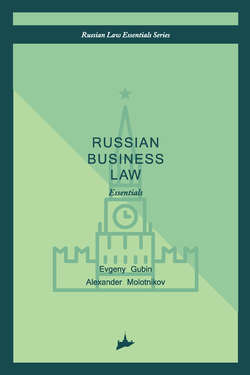Читать книгу Russian business law: the essentials - - Страница 8
Alexander Molotnikov,[3] Levon Garslian,[4] Andrei Gabov[5]
Introduction to Business Law in Russia
2. Economic Environment
ОглавлениеOne could think that after getting the necessary legal capacity for doing business in the early 1990s, nothing else was required for the development of entrepreneurship. In theory, this might be true, but of course, not in practice. The stability and strength of the national economy are the key drivers for the development of business, especially at a starting point. With regard to this, it is important to keep in mind that, in 1991, Russia was just getting into the complex process of transitioning to the market economy.
In the 1990s, the Russian economy experienced a deep recession, accompanied by extremely high inflation, low level of investment, growth of external debt, increase of barters, and many other negative processes. To improve the situation, a series of economic reforms took place, including the liberalization of prices and foreign trade, mass privatization, and other reforms. Nonetheless, in August 1998, Russia announced a default on its state obligations, and refused to support the ruble; in other words, the macroeconomic policy pursued since 1992 had failed.
During the 2000s, another series of reforms, this time with a positive effect, were made in various spheres, inter alia: (1) tax; (2) pension; (3) banking; (4) electricity; (5) railway. Even foreign experts at that time noticed the effectiveness of the reformation processes initiated by President Putin. For instance, the reform of the taxation system was considered a key factor of the economic growth.[8] All these processes resulted in Russia finishing the year of 2007 as the seventh largest economy in the world, ahead of Italy and France.[9]
In the late 2000s, Russia experienced a situation that affected many other countries – the financial crisis of 2008, and the ensuing recovery. In March 2010, the World Bank report noted that the losses of the Russian economy were lower than expected at the beginning of the crisis, due to effective anti-crisis measures taken by the government.[10] However, the period of stability after the recovery from the financial crisis did not last long.
Since the beginning of 2014, the economy has been in stagnation. The outflow of capital from Russia in 2014 amounted to a record $151.5 billion.[11] Moreover, the Russian ruble experienced significant fluctuations and even collapsed against Euro and the US dollar. There were several reasons for this, but the primary reasons were low oil prices, and a political crisis in relations with Ukraine, followed by mass economic sanctions from the US and the EU.
This brief description of the Russian economy development shows that in the last 25 years, the longest period of the economic stability was less than 5 years. Thus, entrepreneurship, being dependent on the overall economic conditions in the country, has always faced challenges during its development.
8
The Putin Curve, Wall St. J. Online, Nov. 26, 2002, http://www.wsj.com/articles/SB1038271514450758308.
9
Russia is among the seven largest economies in the world (РФ вошла в «семёрку» крупнейших экономик мира), VZGLYAD (ВЗГЛЯД), Feb. 8, 2008, http://vz.ru/news/2008/2/8/143489.html.
10
World Bank Believed In Russia (Всемирный банк поверил в Россию), RBK (РБК), March 24, 2010, http://top.rbc.ru/economics/24/03/2010/383833.shtml.
11
Net capital outflow from Russia in 2014 amounted to $151.5 billion (Чистый отток капитала из России в 2014 году составил $151,5 млрд.), RBK(РБК), Jan. 16, 2015, http://top.rbc.ru/finances/16/01/2015/54b96c5e9a7947490508d8d2.
